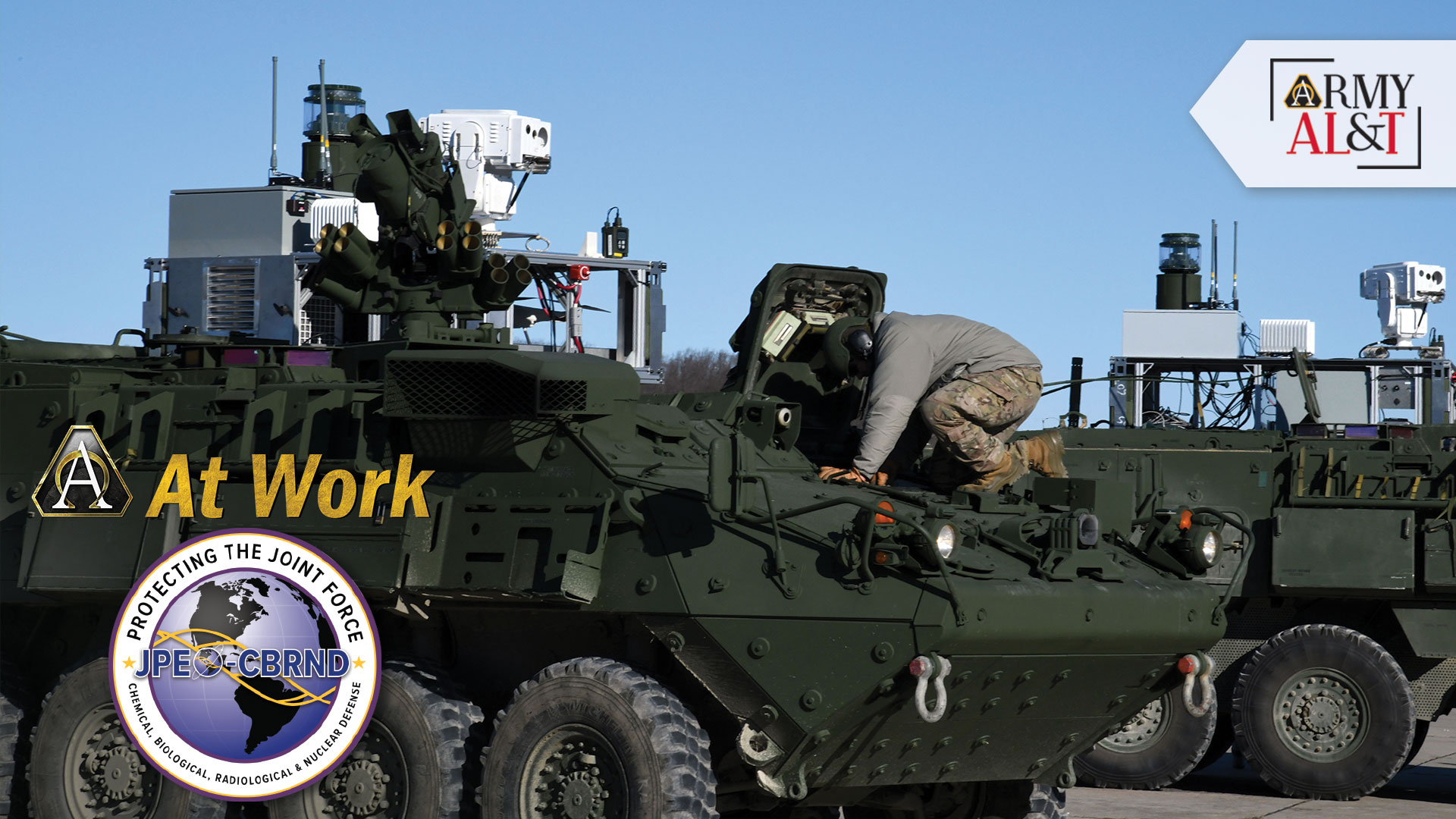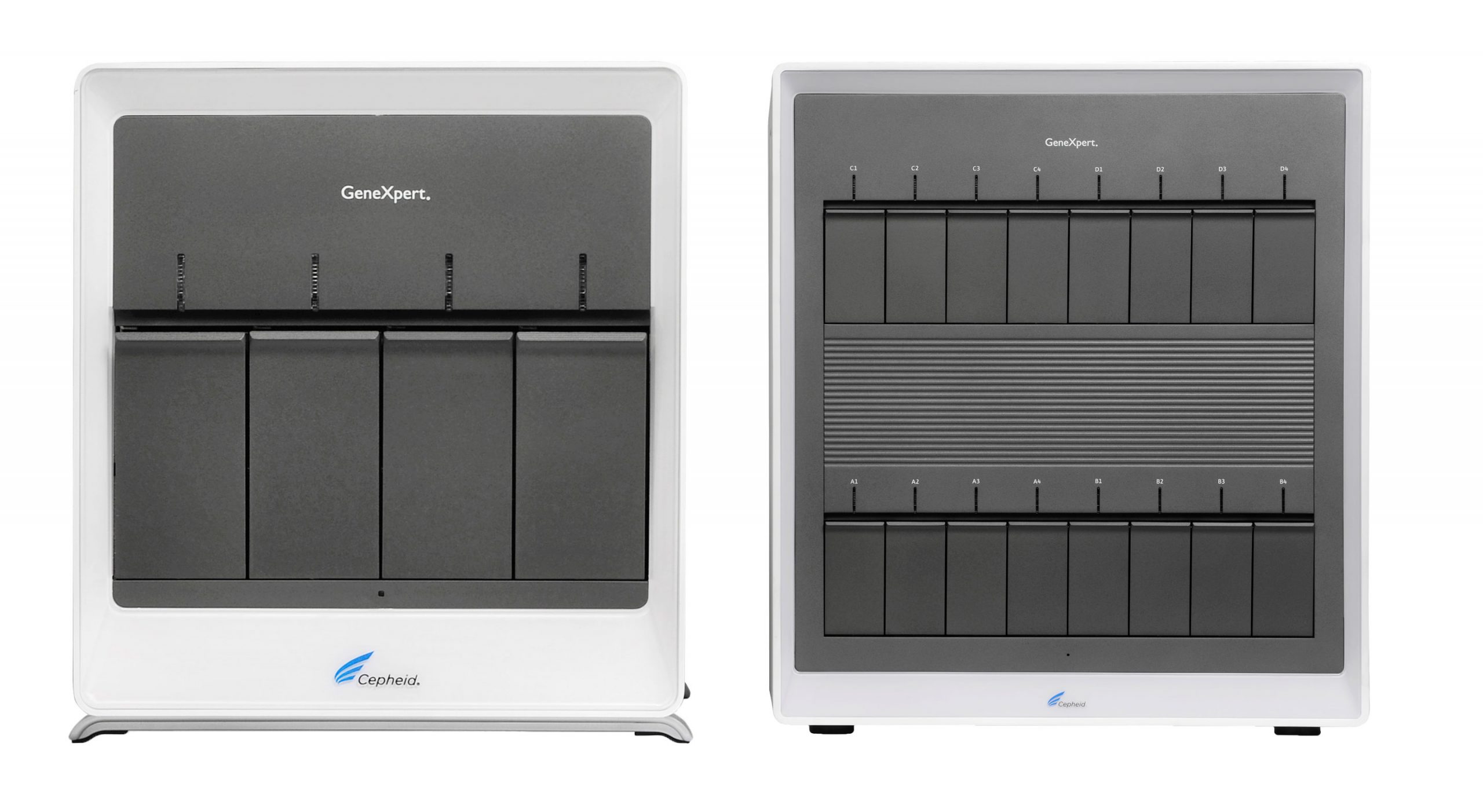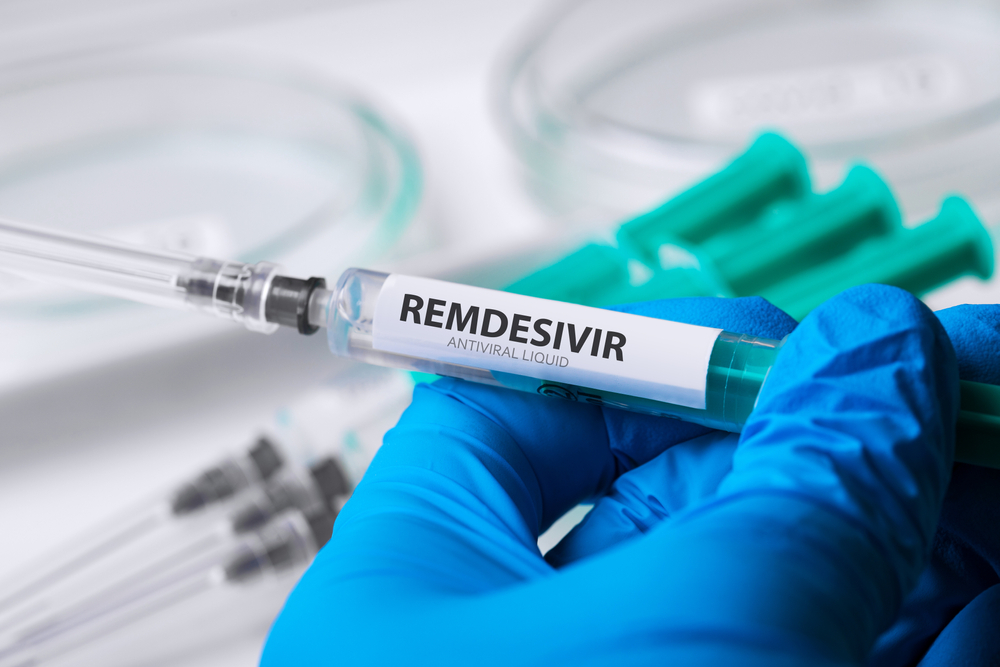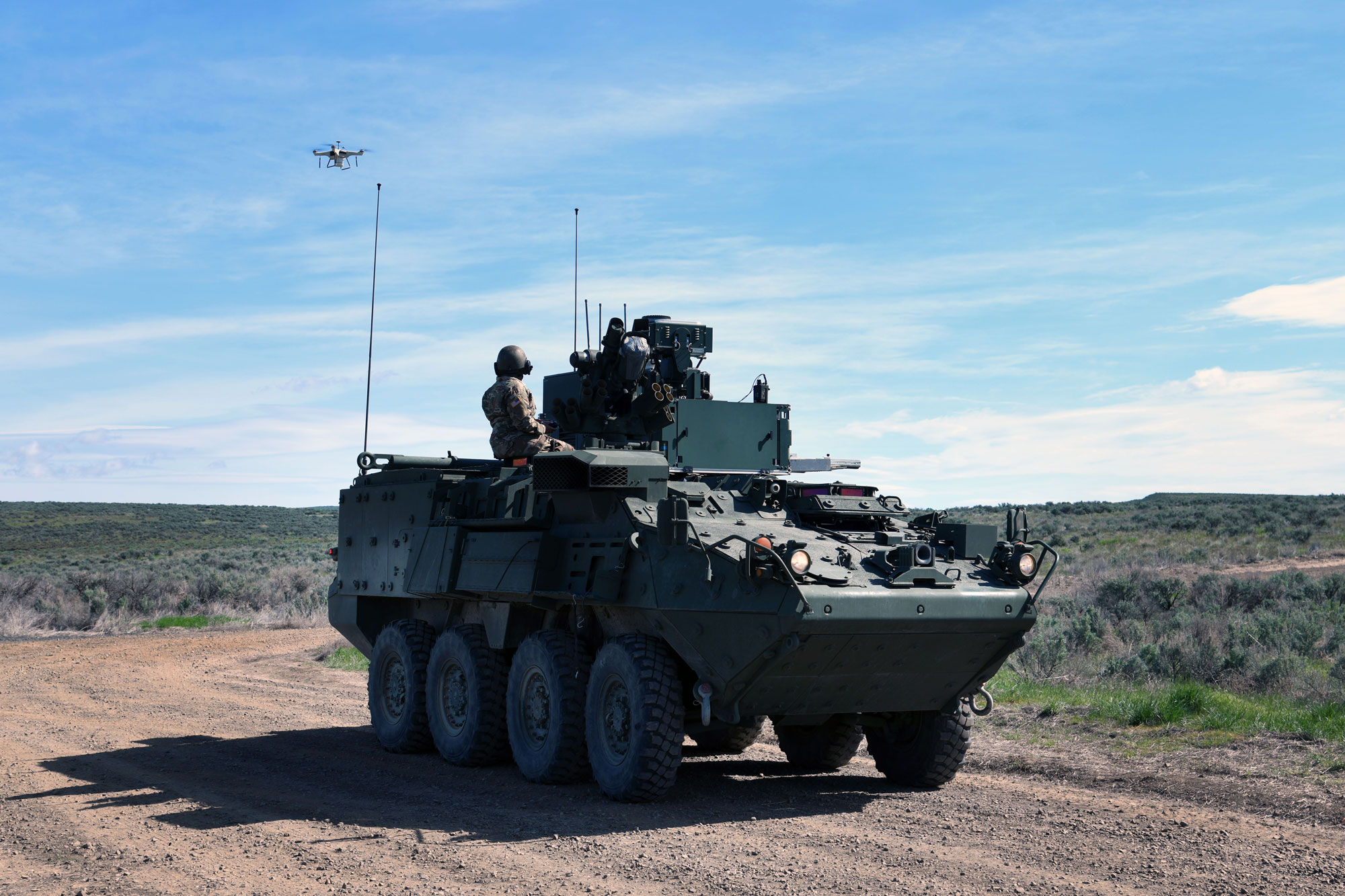
MAJOR MOUNTED PLATFORM UPGRADE: The NBCRV SSU, pictured during a demonstration at Aberdeen Proving Ground South in 2019, uses unmanned systems teaming with a manned platform, leveraging land and air robotic platforms and sensor technologies to detect and identify hazards and communicate back to the commanders making decisions. (U.S. Army photo by Brandon Leibowitz, JPEO-CBRND)
One in a series, ASA(ALT) at Work, which looks into ASA(ALT) organizations, what they do and where they do it.
The Joint Program Executive Office for Chemical, Biological, Radiological and Nuclear Defense (JPEO-CBRND) is the joint services’ lead for development, acquisition, fielding and life cycle support of chemical, biological, radiological and nuclear (CBRN) defense equipment and medical countermeasures. As an effective acquisition program, JPEO-CBRND puts capable and supportable systems in the hands of service members and first responders, when and where needed, at an affordable price. Our vision is a resilient joint force, enabled to fight and win, unencumbered by a chemical, biological, radiological or nuclear environment and championed by innovative and state-of-the-art solutions.
What should we know about JPEO-CBRND?
The warfighter is the centerpiece of everything we do.
We support all the service branches and serve as a committed teammate. The Army is our executive agent through the assistant secretary of the Army for acquisition, logistics and Technology (ASA(ALT)) and we receive funding and oversight through the Office of the Secretary of Defense.
We work closely with our interagency, academic and international partners to provide the best CBRN defense equipment and medical countermeasures.
Our headquarters is at Aberdeen Proving Ground, Edgewood Area, Maryland, with offices across the United States.
What is JPEO-CBRND doing in support of modernization?
The Army requires modernized, mounted CBRN reconnaissance capabilities to meet future operational requirements and address weapons of mass destruction threats from near-peer adversaries. However, the current Stryker Nuclear Biological Chemical Reconnaissance Vehicle (NBCRV) Sensor Suite was using 23-plus-year-old technology, posing a challenge to operational readiness rates because of the complexity and obsolescence of the CBRN sensors. The Stryker NBCRV Sensor Suite Upgrade (SSU) program is an example of how to embrace the principles of acquisition reform and the support of senior leaders to accelerate from design to development.
To achieve the Army’s goals of readiness and modernization, JPEO-CBRND assessed available technology to upgrade the sensor suite package on the NBCRV and thus allow it to perform reconnaissance autonomously. This modernization effort incorporated six specialized chemical agent sensors into one uniform package, bringing the NBCRV sensor capabilities up to date with current technologies and ultimately readying the NBCRV for modern Army maneuver support.
The upgraded sensor suite package increases the standoff distance of chemical weapon sensing significantly, keeping warfighters out of the most hazardous environments of the battlefield by performing remote and on-the-move detection. The NBCRV SSU program built prototypes that integrated additional detection while still reducing the size of the system, and developed command and control software to align with C5ISR Mounted Mission Command. (C5ISR is command, control, communications, computers, cyber, intelligence, surveillance and reconnaissance.) It also demonstrated platform adaptability by integrating onto a new unmanned ground vehicle and an unmanned aerial vehicle, translating all the data from those sensors to usable information for the Soldier and the chain of command.
Senior leader support for acquisition reform made the rapid pace for this modernization possible. An operational requirement document was used instead of developing a new capabilities development document, and a modified work order was used to reduce testing requirements and cost and increase the speed of delivery to the warfighter. Modular open system architecture enabled parallel development of the CBRN sensors and the platform integration.
“Establishing a systems integration lab locally facilitated rapid integration and testing of capabilities across the enterprise. This allowed us to conduct highly successful demonstrations in the Aberdeen Proving Ground area,” said Lt. Col. Jeffrey Strauss, joint project manager for Reconnaissance and Platform Integration. Using these methods, the Stryker NBCRV SSU program designed and constructed fully integrated prototypes within 100 days from receipt of the validated requirement.

GOING ONE BETTER: The BioFire FilmArray is a diagnostic system designed to deliver results within one hour. Preexisting BioFire test panels would not recognize COVID-19 specifically, so the JPEO-CBRND, supported by DOD, worked with BioFire to rapidly develop a single COVID-19 test. It now has an FDA emergency use authorization and is available for use. (Photo by Joint Project Manager for CBRN Medical Graphics)
Where does JPEO-CBRND fit into the bigger picture?
One of the responsibilities of the JPEO-CBRND is to make medical countermeasure capabilities available to those who need them. As such, the JPEO-CBRND has existing capabilities and expertise to rapidly respond to COVID-19, particularly in product development, manufacturing, clinical trials management and fielding. The JPEO-CBRND has been engaged in COVID-19 response efforts since the first cases were identified, supporting the Office of the Assistant Secretary of Defense for Health Affairs, which is the designated health lead for DOD’s COVID-19 response.
“The JPEO-CBRND’s diverse portfolio allows us to respond to the COVID-19 pandemic through a comprehensive, three-pronged approach. Coordinated efforts to prevent, detect and treat this disease will facilitate the delivery of effective medical countermeasures that protect both warfighters and civilians alike,” said Col. Ryan Eckmeier, joint project manager for Chemical, Biological, Radiological and Nuclear Medical.
The JPEO-CBRND has accelerated rapid response for DOD and interagency partners to meet objectives in detection, prevention and treatment.

EXPEDITED TREATMENT: The U.S. Department of Health and Human Services leveraged an other-transaction authority to develop a COVID-19 diagnostic test for domestic use. The test works on Cepheid’s GeneXpert GX4, left, and GX16 systems, used worldwide to test for infections such as tuberculosis, HIV, Group A streptococcus, influenza and now COVID-19. (Photos courtesy of Cepheid Inc.)
DETECTION AND DIAGNOSTICS
The JPEO-CBRND has made great strides in the fight to rapidly identify COVID-19, to prevent further spread of the disease and inform treatment options. The Next Generation Diagnostics System is already fielded to DOD and Centers for Disease Control and Prevention sites worldwide—with newly fielded systems increasing exponentially in response to the joint services’ demand—and is being used for COVID-19 testing.
While using the BioFire Defense LLC’s FilmArray device and associated respiratory panels allowed for identification of some types of coronavirus (such as those that cause SARS, severe acute respiratory syndrome, and MERS, Middle East respiratory syndrome) and the ruling out of other respiratory diseases presenting with symptoms similar to those of COVID-19, existing BioFire respiratory panels would not recognize COVID-19 specifically. The JPEO-CBRND addressed this capability gap by working with BioFire, using Defense Health Program funds and through the leadership of Dr. Terry M. Rauch, acting deputy assistant secretary of defense for health readiness policy and oversight within the Office of the Assistant Secretary of Defense for Health Affairs. The result was to rapidly develop a single COVID-19 test, which is now available for use under the U.S. Food and Drug Administration’s (FDA) emergency use authorization.
The JPEO-CBRND is also facilitating interactions between the U.S. Department of Health and Human Services’ Biomedical Advanced Research and Development Authority (BARDA) and Cepheid Inc. to provide a diagnostics system and tests for diagnosis and treatment in public health. BARDA leveraged an other-transaction authority that was established by the JPEO-CBRND in order to develop a COVID-19 diagnostic test for domestic use. The JPEO-CBRND’s existing advanced development diagnostics program with Cepheid facilitated the vital connection between the company and the agency, and enabled the Department of Health and Human Services to expeditiously address the demand for COVID-19 testing capabilities within the United States.
In addition, the JPEO-CBRND partnered with the Naval Medical Research Center to assess and ensure the availability of diagnostic supplies needed to evaluate thousands of samples for COVID-19 laboratory testing.
PREVENTION
The JPEO-CBRND is using the DOD Advanced Development and Manufacturing facility to make three protective products; two vaccines and one antibody, which are being manufactured to protect DOD personnel. These products are being developed in partnership with the Defense Advanced Research Projects Agency and the National Institutes of Health (NIH). Doses of these products will be accelerated for testing in clinical trials using this DOD capability and will be made available for early use by DOD personnel.

THE RIGHT CONNECTIONS: Development of effective antiviral treatments is both a national security and a defense priority, particularly as the nation responds to the ongoing COVID-19 pandemic. The development of remdesivir grew out of a partnership that JPEO-CBRND had with Gilead Sciences Inc. Now the drug shows promise against coronaviruses. (Photo by Getty Images/Teka77)
TREATMENT
In 2016, the JPEO-CBRND partnered with Gilead Sciences Inc. to develop remdesivir, a broad-spectrum antiviral, to combat outbreaks of viruses that may affect our warfighters. Peer-reviewed journals have reported that the drug shows activity against coronaviruses. This existing relationship with a valued industry partner, along with the contributions of the JPEO-CBRND technical team—to leverage the Medical CBRN Defense Consortium’s rapid contracting capability, request submissions from across the industry and then review over 500 white papers—have accelerated efforts to repurpose the drug as a COVID-19 treatment.
Recently, the JPEO-CBRND cooperated with interagency partners who develop medical capabilities for public health protection to make remdesivir available under a clinical trial. The JPEO-CBRND worked with the U.S. Army Medical Research and Development Command’s U.S. Army Medical Materiel Development Activity to establish a force health protection protocol with the FDA so that both service members and civilian DOD personnel who cannot participate in the NIH clinical trial have access to this treatment.
Remdesivir is now available under this protocol at 11 sites worldwide, with at least six DOD personnel recovering from COVID-19 after receiving the treatment. The JPEO-CBRND is also implementing observational clinical studies, in which the investigator makes no intervention and patients are allocated treatment based on clinical decisions, inside and outside of the continental United States. These clinical studies, which leverage well-established DOD clinical research networks, provide a standardized approach to collecting clinical data across the Military Health System and with international partners. These efforts will lay the foundation for studies of therapeutic and prophylactic (vaccine) products.
“The JPEO-CBRND’s COVID-19 response efforts have demonstrated our ability to mitigate the harm caused by emerging biological threats, when and where it really counts. We are able to leverage and tailor existing agreements with our industry and interagency partners to rapidly bring medical solutions to the fight against this pandemic,” Eckmeier said.

MANNED-UNMANNED TEAMING: During the Joint Warfighter Assessment 2019, the Army demonstrated the chemical detection capability of the Deep Purple drone in conjunction with the NBCRV SSU, teaming a robotic unmanned capability with a manned platform. (U.S. Army photo by Brandon Leibowitz, JPEO-CBRND)
“We truly are all in this together,” he said. “While the JPEO-CBRND’s mission is to bring much-needed CBRN defense equipment and medical countermeasure capabilities to the joint force, the expertise and dedication of our workforce has allowed us to pivot quickly in support of an efficient and effective whole-of-government response to the COVID-19 pandemic.”
ONLINE EXTRAS
JPEO-CBRND homepage: https://www.jpeocbrnd.osd.mil/home
U.S. Army Combat Capabilities Development Command Chemical Biological Center homepage: https://www.cbc.ccdc.army.mil
Read the full article in the Summer 2020 issue of Army AL&T magazine.
Subscribe to Army AL&T News – the premier online news source for the Army Acquisition Workforce.







